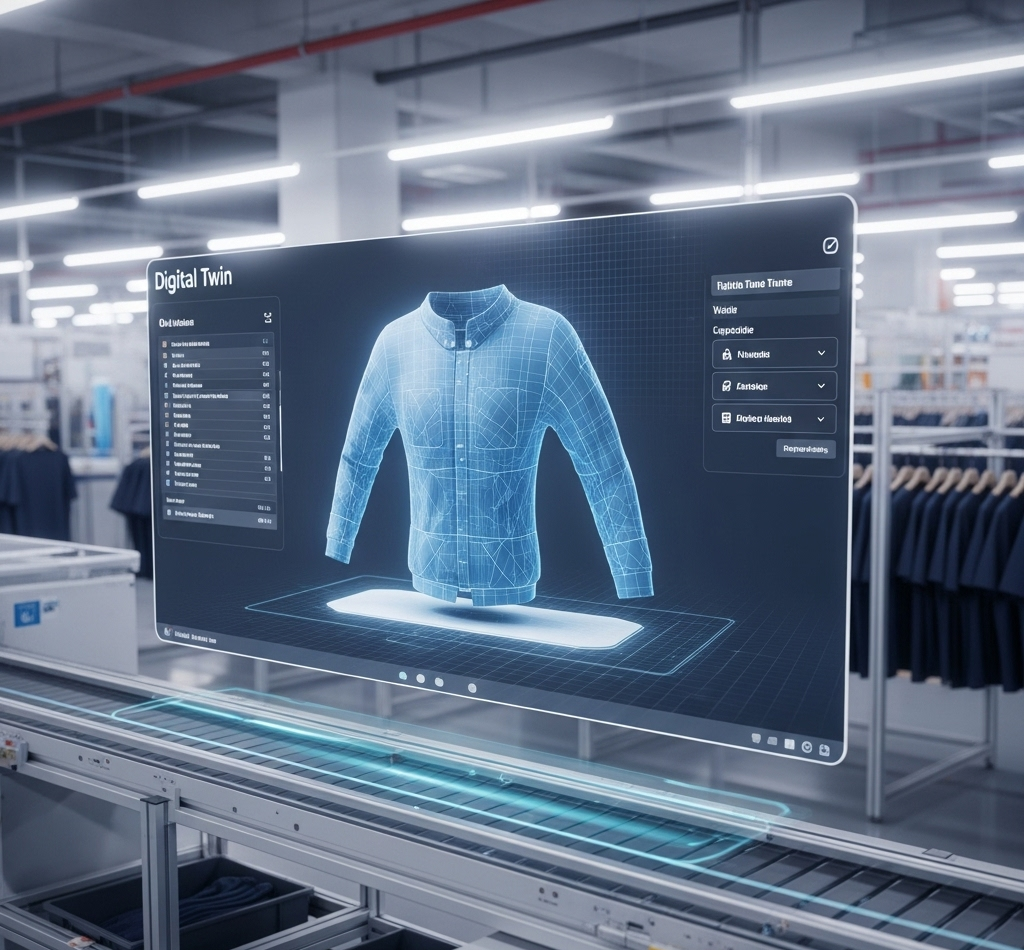
The apparel manufacturing industry is undergoing a transformative shift, driven by the integration of advanced technologies like digital twins and artificial intelligence (AI). These tools are reshaping apparel procurement, enabling manufacturers to optimize supply chains, reduce waste, and meet consumer demands with unprecedented precision. This blog post explores how digital twins and AI are revolutionizing apparel procurement, their benefits, and their potential to redefine the industry.
A digital twin is a virtual replica of a physical object, process, or system. In the context of apparel manufacturing, it could represent:
A digital model of a factory’s procurement and production processes
A simulation of supplier performance and logistics flow
A virtual version of a product, tracking its development from design to delivery
By creating a real-time, data-driven mirror of operations, digital twins enable smarter decision-making and proactive issue resolution.
AI takes digital twins from static models to intelligent ecosystems. Machine learning algorithms analyze data from across the value chain to:
Predict supply chain disruptions
Recommend optimal sourcing decisions
Detect procurement inefficiencies
Improve demand forecasting and supplier risk assessments
AI-powered digital twins can simulate “what-if” scenarios, helping procurement managers explore the impact of material shortages, logistics delays, or pricing changes before they happen.
Digital twins combined with AI can evaluate potential suppliers across dimensions like quality, lead time, cost, and ESG compliance. Instead of relying on historical averages, procurement teams get a dynamic, predictive model.
By simulating real-time material usage and procurement timelines, digital twins help minimize overordering and understocking—reducing waste and costs.
When a raw material shipment is delayed, the AI engine can instantly model alternative sourcing options and adjust the procurement plan, minimizing production downtime.
Procurement, design, and production teams can align using a shared digital twin that reflects accurate data on availability, pricing, and timelines.
Apparel brands increasingly focus on reducing environmental impact. AI can optimize procurement for lower emissions, while digital twins can simulate the carbon footprint of various supplier routes and materials.
Data integration: Building accurate digital twins requires clean, real-time data across ERP, PLM, and supplier platforms.
Change management: Teams need training and new workflows to adopt AI tools effectively.
Vendor collaboration: Suppliers must be willing to share data and integrate with the system for full transparency.
As fashion cycles shorten and the pressure to be both cost-effective and sustainable intensifies, digital twins and AI are no longer optional—they’re essential. Apparel manufacturers that embrace this tech stack will gain a competitive edge through visibility, agility, and precision.
© 2025 Lasso Supply Chain Software LLC
Get instant access to our report on the Top Procurement Trends of 2025 by filling out the form below.

Get instant access to our report on the Top Procurement Trends of 2025.